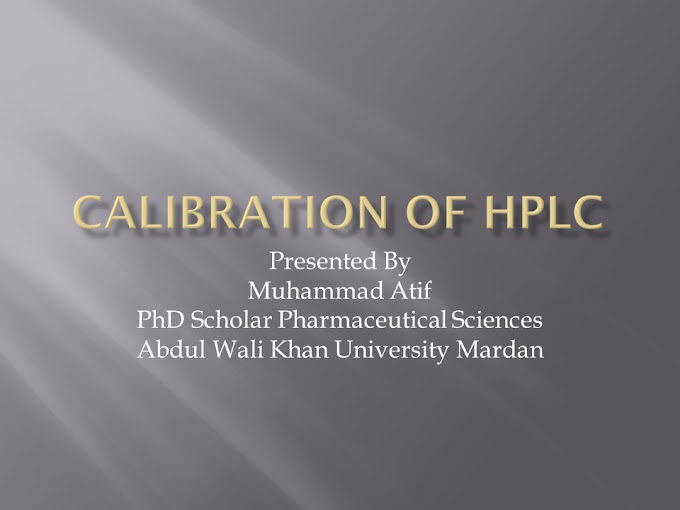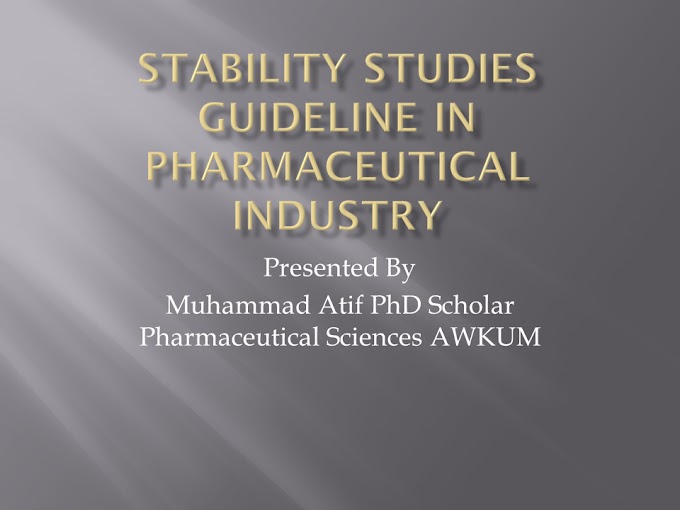Solvents
ALCOHOL, USP: ETHYL ALCOHOL, ETHANOL, C2H5OH
• Next to water, alcohol is the most
useful solvent in pharmacy.
• It is used as a primary solvent for
many organic compounds.
• Together with water, it forms a
hydroalcoholic mixture that dissolves both alcohol-soluble and water-soluble
substances, a feature especially useful in the extraction of active
constituents from crude drugs.
• By varying the proportion of the two agents,
the active constituents may be selectively dissolved and extracted or allowed
to remain behind, according to their particular solubility characteristics in
the menstruum.
• Alcohol, USP, is 94.9% to 96.0% C2H5OH
by volume (i.e., v/v) when determined at 15.56°C, the U.S. government’s
standard temperature for alcohol determinations.
• Dehydrated Alcohol, USP, contains
not less than 99.5% C2H5OH by volume and is used when an essentially water-free
alcohol is desired.
• Alcohol has been well recognized as
a solvent and excipient in the formulation of oral pharmaceutical products.
• Certain drugs are insoluble in water
and must be dissolved in an alternative vehicle.
• Alcohol is often preferred because
of its miscibility with water and its ability to dissolve many water-insoluble
ingredients, including drug substances, flavorants, and antimicrobial
preservatives.
• Alcohol is frequently used with
other solvents, such as glycols and glycerin, to reduce the amount of alcohol
required.
• It is also used in liquid products as an
antimicrobial preservative alone or with parabens, benzoates, sorbates, and
other agents.
• However, aside from its
pharmaceutical advantages as a solvent and a preservative, concern has been
expressed over the undesired pharmacologic and potential toxic effects of
alcohol when ingested in pharmaceutical products, particularly by children.
• Thus, the U.S. Food and Drug Administration
(FDA) has proposed that insofar as possible manufacturers of over-the-counter
(OTC) oral drug products restrict the use of alcohol and include appropriate
warnings in the labeling.
• For OTC oral products intended for
children under 6 years of age, the recommended alcohol content limit is 0.5%;
for products intended for children 6 to 12 years of age, the recommended limit
is 5%; and for products recommended for children over 12 years of age and for adults,
the recommended limit is 10%.
DILUTED ALCOHOL, NF
• Diluted Alcohol, NF, is prepared by
mixing equal volumes of Alcohol, USP, and Purified Water, USP.
• The final volume of such mixtures is
not the sum of the individual volumes of the two components because the liquids
contract upon mixing; the final volume is generally about 3% less than what
would otherwise be expected.
• Thus, when 50 mL of each component is
combined, the resulting product measures approximately 97 mL.
• It is for this reason that the strength of
Diluted Alcohol, NF, is not exactly half that of the more concentrated alcohol
but slightly greater, approximately 49%.
• Diluted alcohol is a useful
hydroalcoholic solvent in various pharmaceutical processes and preparations
RUBBING ALCOHOL
• Rubbing alcohol contains about 70%
ethyl alcohol by volume, the remainder consisting of water, denaturants with or
without color additives and perfume oils, and stabilizers.
• Each 100 mL must contain not less
than 355 mg of sucrose octa- acetate or 1.4 mg of denatonium benzoate, bitter
substances that discourage accidental or abusive oral ingestion.
• According to the Internal Revenue Service,
U.S. Treasury Department, the denaturant employed in rubbing alcohol is formula
23-H, which is composed of 8 parts by volume of acetone, 1.5 parts by volume of
methyl isobutyl ketone, and 100 parts by volume of ethyl alcohol.
• The use of this denaturant mixture
makes the separation of ethyl alcohol from the denaturants virtually impossible
with ordinary distillation apparatus.
• This discourages the illegal removal for use
as a beverage of the alcoholic content of rubbing alcohol.
• The product is volatile and flammable
and should be stored in a tight container remote from fire. It is employed as a
rubefacient externally and as a soothing rub for bedridden patients, a
germicide for instruments, and a skin cleanser prior to injection. It is also
used as a vehicle for topical preparations.
• Synonym: alcohol rubbing compound.
GLYCERIN, USP (GLYCEROL), CH2OH•CHOH•CH2OH
• Glycerine is a clear syrupy liquid
with a sweet taste.
• It is miscible with both water and alcohol. As
a solvent, it is comparable with alcohol, but because of its viscosity, solutes
are slowly soluble in it unless it is rendered less viscous by heating.
• Glycerine has preservative qualities
and is often used as a stabilizer and as an auxiliary solvent in conjunction
with water or alcohol.
• It is used in many internal preparations.
ISOPROPYL RUBBING ALCOHOL
• Isopropyl rubbing alcohol is about
70% by volume isopropyl alcohol, the remainder consisting of water with or
without colour additives, stabilizers, and perfume oils.
• It is used externally as a
rubefacient and soothing rub and as a vehicle for topical products.
• This preparation and a commercially
available 91% isopropyl alcohol solution are commonly employed by diabetic
patients in preparing needles and syringes for hypodermic injections of insulin
and for disinfecting the skin.
PROPYLENE GLYCOL, USP, CH3CH(OH)CH2OH
• Propylene glycol, a viscous liquid,
is miscible with water and alcohol.
• It is a useful solvent with a wide
range of applications and is frequently substituted for glycerin in modern
pharmaceutical formulations.
PURIFIED WATER, USP, H2O
• Naturally occurring water exerts its
solvent effect on most substances it contacts and, thus, is impure, containing
varying amounts of dissolved inorganic salts, usually sodium, potassium,
calcium, magnesium, and iron; chlorides; sulfates; and bicarbonates, along with
dissolved and undissolved organic matter and microorganisms.
• Water found in most cities and towns
where water is purified for drinking usually contains less than 0.1% of total solids,
determined by evaporating a 100-mL sample to dryness and weighing the residue
(which weighs <100 mg).
• Drinking water must meet the U.S.
Public Health Service regulations with respect to bacteriologic purity.
• Acceptable drinking water should be
clear, colorless, odorless, and neutral or only slightly acidic or alkaline,
the deviation from neutral being due to the nature of the dissolved solids and
gases (carbon dioxide contributing to the acidity and ammonia to the alkalinity
of water).
• Ordinary drinking water from the tap
is not acceptable for the manufacture of most aqueous pharmaceutical
preparations or for the extemporaneous compounding of prescriptions because of
the possible chemical incompatibilities between dissolved solids and the
medicinal agents being added.
• Signs of such incompatibilities are
precipitation, discoloration, and occasionally effervescence.
• Its use is permitted in washing, in extraction
of crude vegetable drugs, in preparation of certain products for external use,
and when the difference between tap water and purified water is of no
consequence.
• . Naturally, when large volumes of
water are required to clean pharmaceutical machinery and equipment, tap water
may be economically employed so long as a residue of solids is prevented by
using purified water as the final rinse or by wiping the water dry with a
meticulously clean cloth.
Method
For Purification of Water USP
Purified
Water, USP, is obtained by
• 1. Distillation,
• 2. Ion exchange treatment,
• 3. Reverse osmosis,
• It is prepared from water complying
with the federal Environmental Protection Agency with respect to drinking
water.
• Purified Water, USP, has fewer solid
impurities than ordinary drinking water.
• When evaporated to dryness, it must
not yield more than 0.001% of residue (1 mg of solids per 100 mL of water).
• Thus, purified water has only 1% as
much dissolved solids as tap water.
• Purified Water, USP, is intended for use in the
preparation of aqueous dosage forms except those intended for parenteral
administration (injections).
• Water for Injection, USP;
Bacteriostatic Water for Injection, USP; or Sterile Water for Injection, USP,
is used for injections
Distillation Method
• Many stills in various sizes and
styles with capacities ranging from about 0.5 to 100 gallons of distillate per
hour are available to prepare purified water.
• Generally, the first portion of aqueous
distillate (about the first 10% to 20%) must be discarded because it contains
many foreign volatile substances usually found in urban drinking water, the
usual starting material.
• Also, the last portion of water
(about 10% of the original volume of water) remaining in the distillation
apparatus must be discarded and not subjected to further distillation because
distillation to dryness would undoubtedly result in decomposition of the
remaining solid impurities to volatile substances that would distill and
contaminate the previously collected portion of distillate.
Ion Exchange Method
• On a large or small scale, ion
exchange for the preparation of purified water offers a number of advantages
over distillation.
• For one thing, the requirement of
heat is eliminated and with it, the costly and troublesome maintenance
frequently encountered in the operation of the more complex distillation
apparatus.
• Because of the simpler equipment and
the nature of the method, ion exchange permits ease of operation, minimal
maintenance, and a more mobile facility.
• Many pharmacies and small
laboratories that purchase large volumes of distilled water from commercial
suppliers for use in their work would no doubt benefit financially and in
convenience through the installation of an ion exchange demineralizer in the
work area.
• The ion exchange equipment in use
today generally passes water through a column of cation and anion exchangers consisting of
water insoluble synthetic polymerized phenolic, carboxylic, amino, or
sulfonated resins of high molecular weight.
• These resins are mainly of two
types:
• (a) the cations, or acid exchangers, which
permit the exchange of the cations in solution (in the tap water) with hydrogen
ion from the resin;
• (b) the anions, or base exchange
resins, which permit the removal of anions.
• These two processes are successively or simultaneously
employed to remove cations and anions from water.
• The processes are indicated as
follows, with M+ indicating the metal or cation (as Na+) and the X− indicating
the anion (as Cl−).
•
Cation exchange:
H-resin+M + X +H2O → M-resin+H + X +H2 O(pure)
•
Anion exchange:
Resin-NH2 +H + X +H2O →2 Resin-NH2*
HX+H2O(pure)
Water
purified in this manner, referred to as demineralized or deionized water, may be
used in any pharmaceutical preparation or prescription calling for distilled
water.
Reverse Osmosis
• Reverse osmosis is one of the
processes referred to in the industry as cross-flow (or tangential flow) membrane
filtration .
• In this process, a pressurized
stream of water is passed parallel to the inner side of a filter membrane core.
• A portion of the feed water, or
influent, permeates the membrane as filtrate, while the balance of the water
sweeps tangentially along the membrane to exit the system without being
filtered.
• The filtered portion is called the
permeate because it has permeated the membrane.
• The water that has passed through
the system is called the concentrate because it contains the concentrated
contaminants rejected by the membrane.
• Whereas in osmosis the flow through a
semipermeable membrane is from a less concentrated solution to a more
concentrated solution, the flow in this cross-flow system is from a more
concentrated to a less concentrated solution; thus the term reverse osmosis.
• Depending on their pore size,
cross-flow filter membranes can remove particles defined in the range of
microfiltration (0.1 to 2 μm, e.g., bacteria); ultrafiltration (0.01 to 0.1 μm,
e.g., virus); nanofiltration (0.001 to 0.01 μm, e.g., organic compounds in the molecular
weight range of 300 to 1,000); and reverse osmosis (particles less than 0.001
μm). Reverse osmosis removes virtually all viruses, bacteria, pyrogens, and
organic molecules and 90% to 99% of ions.






0 Comments